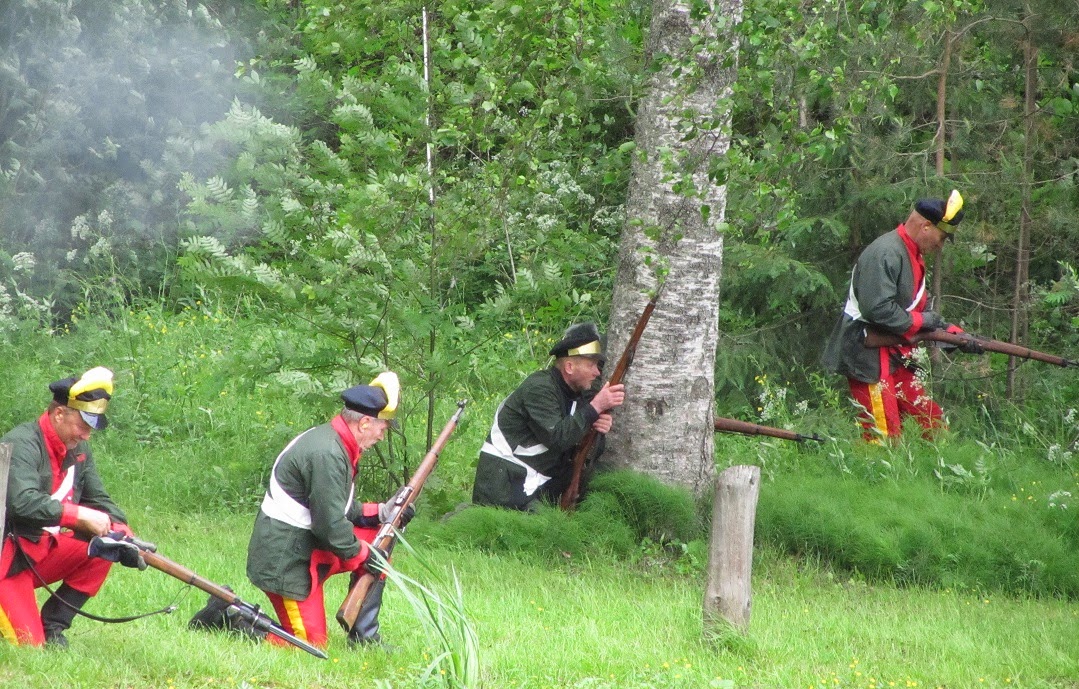
We're enjoying some hot summer weather up here in the north, and that means that I spend more time doing yardwork than painting miniatures. There is an old, small sand quarry on our property which gives out very fine sand, perfect for 6mm models. In the quarry there are remains of an old tar burning pit, which we discovered when we moved here in the early 90's. The pit has been badly mauled by tractors getting sand, so the form of the pit was never apparent. We only recognized the pit from a pipe running out of a mound in the sand and the bits of burnt wood scattered about.
 |
| The tar pipe sticking out of the ground. Back in the day the pipe would have been made of wood. I guess this tar pit is from the first half of the 20th century. |
Finns have historically had an abundance of pine forests and tar was the area's main export for centuries as long as the world's navies depended on the stuff. Britain was a big buyer of Finnish tar and there's a story that during the Crimean war when Finland, being part of Russia and also at war with Britain, was attacked by the British navy. The British ships sailed to Oulu, the tar capital of Finland and made landfall. There was a big tar magazine there and the Finnish people explained to the British that all this tar was already bought and paid for by the British navy and it was just waiting for the war to be over to be shipped to England. The Brits, believing this to be a ruse burned down the magazines, burning down their own tar.
To make tar, first you dig a funnel shaped pit in sandy ground with a pipe in the bottom to let the accumulating tar out. Then you pile pieces of suitable tar pine to make a mound on top of the sand funnel. The mound is then covered with earth to keep air out.
 |
| A tar pit in the old days. The one I was digging must have been much smaller than this. |
The process is to burn the mound slowly from the sides, heating up the mound but not allowing it to burst into flames. When heat builds up in the low oxygen environment, the pine does not start burning but rather starts to slowly sweat tar. This tar then seeps to the bottom of the pit and is drained from the pipe. The wood itself is reduced into charcoal in the process and can then be used by blacksmiths or people barbecuing.
Anyway, decades ago I spotted a fragment of smooth rock at the pit, which looked like it had been worked on with human hands. Turns out it was a piece of an old millstone which has broken down. Having no use for a broken millstone, I left it there and forgot about it. Fast forward to this spring, I finally thought I'd dig up the stone to use it as decoration in my yard, as a millstone like that can easily be a hundred years old or more. To my disappointment I only found a couple of parts of the stone which I hauled back home with me.
Fast forward again to yesterday morning. May was a very rainy month and we had taken some additional sand from the quarry as well, so I was curious to go and see if I could find new pieces of the millstone. After all, it's unlikely that there would only be a couple of pieces of it there instead of the whole thing. Sure enough, I spotted a fresh piece several meters from the location I found the others on, and deeper in the ground. The rain had brought it up at a spot where sand had been dug out a couple of months ago. My nephew was visiting my parents living close by, so I enlisted him to help and we set out to look for pieces to the millstone puzzle together. After some poking around and shoveling, we actually managed to find most of the missing parts!
 |
| Score! It's a big one too! The diameter must be over a meter. I think I have about a quarter already hauled home, so there isn't much left missing. |
 |
| Looks like he's really enjoying himself, doesn't he? When I was his age, if my uncle would have asked me to help him dig up long buried antiquities, I would have pissed myself with excitement! The kids today obviously need to watch Raiders of the Lost Ark. |
Not only that, but we discovered the stone was somehow connected with the tar burning process. On one of the fragments there was this big lump of solidified tar, which came off after a couple of knocks with a shovel. I'm not sure what the role of the old millstone has been in the tar making process, but I think it might have been set at the base of the tar funnel to guide the tar or something. Anyway, it should make a nice decoration with a story mostly unknown to us.
 |
| The tar was still damp and a wonderful tar smell filled the air when it came off the millstone fragment. I'd say it's been in the ground for more than 50 years at least. |




























